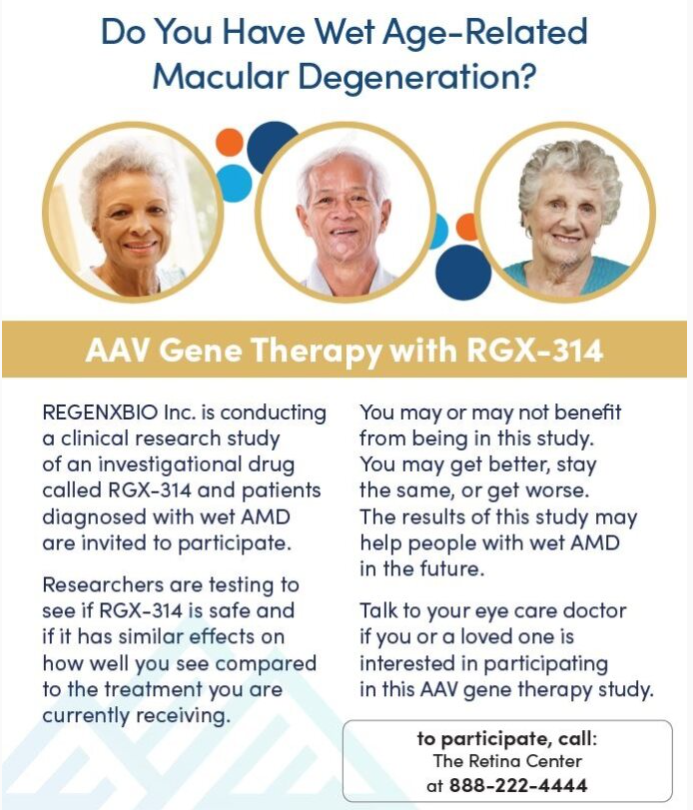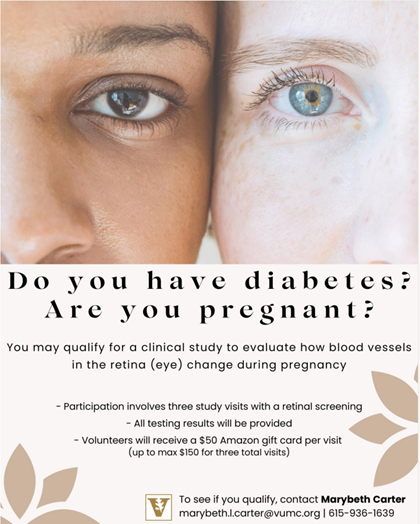NAC Attack – A Multicenter, Placebo-Controlled clinical Trial to Test Oral N-Acetylcysteine in Patients with Retinitis Pigmentosa
Vanderbilt Eye Insitute is working closely with Johns Hopkins University on NAC Attack which is a clinical trial sponsored by the National Eye Institute- National Institutes for Health. NAC is a strong antioxidant that reduces axidative damage. NAD Attack is a randomized, placebo- controlled muticenter trial that will test whether NAC can slow progression of Retinitis Pigmentosa (RP). The results are critical to the RP community because if NAC proves beneficial, it will mean lifelong treatment with NAC for patients with RP.
CLICK HERE to learn more
ASCENT – Gene Therapy Study for Wet Age-Related Macular Degeneration (wAMD)
We are collaborating with REGENXBIO Inc. in conducting a clinical research study of an investigational drug called RGX-314 in patients diagnosed with wet AMD. Researchers are testing to see if RGX-314 is safe and if it has similar effects on how well patients see compared to the current standard of care treatment for wAMD.

Fenofibrate for Prevention of Diabetic Retinopathy Worsening(Protocol AF)
A multi-center study being conducted by DRCR Retina Network sponsored by the National Institutes of Health, the U.S. Department of Health and Human Services. Your eye doctor is taking part in a study to find out if a pill taken by mouth can slow or prevent worsening of a condition called diabetic retinopathy. This study is being done by the DRCR Retina Network. The Network is a group of clinical sites dedicated to research of retinal diseases. It includes over 100 eye clinics in the United States and Canada. The Network started over 15 years ago and has run over 30 studies on retinal disease.
CLICK HERE to learn more

Understanding Retinal Vascular Changes during Pregnancy and the Impact on Maternal and Fetal Health
The goal of this study is to better understand how the back part of the eye—called the retina and the choroid—changes during pregnancy. We will take specialized photos of the eye at three different timepoints: early in pregnancy (first or second trimester), late in pregnancy (third trimester), and after you deliver. This imaging is non-invasive and does not require contact with the surface of the eye. The patient simply rests their chin on a machine that resembles a slit lamp, which is the tabletop microscope used in the eye clinic. The photos taken will allow us to assess specific parameters, like blood flow and the health of specialized cells that support vision. Understanding how the eyes change during pregnancy may help guide how retina specialists counsel their patients and how frequently they see them.
